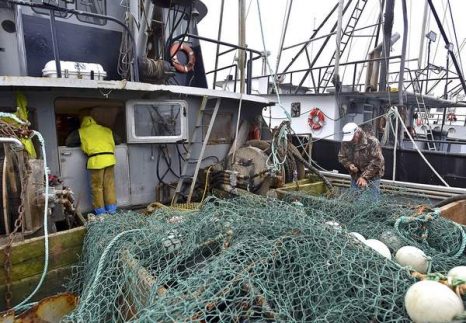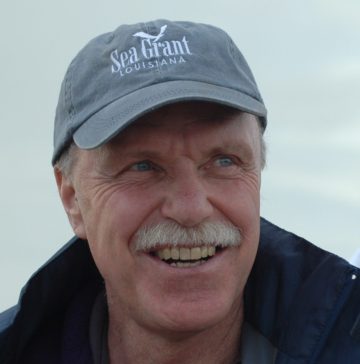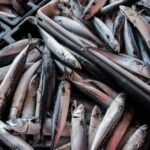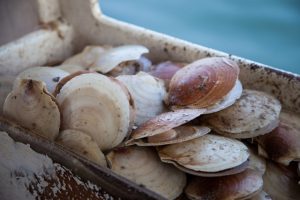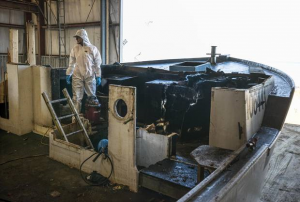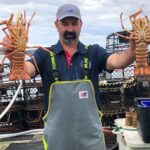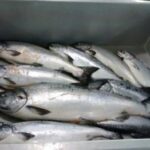Category Archives: Pacific
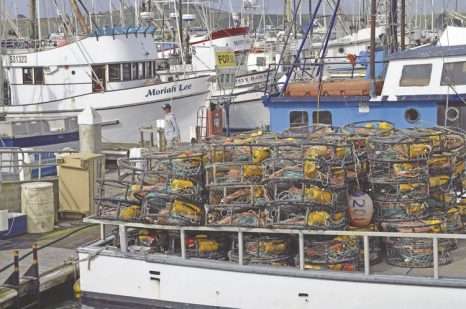
‘Tis the season – Commercial crabbing begins off the coast of Half Moon Bay
As the clock struck midnight, local fishermen of the coast of Half Moon Bay began eagerly reeling in the first commercially caught crabs of the season. The scene at Pillar Point Harbor’s docks the day before the official Nov. 15 opener of California’s commercial crab fishery was described simply as “a zoo.” “We’re excited. The last month or so you’ve just been working on the boat, working on the crab pots, getting everything ready. And now, you finally get to go to work, get to catch something. We’re all pumped up,” said Porter McHenry, captain of the Merva W and president of the Half Moon Bay Seafood Marketing Association. click here to read the story 10:38
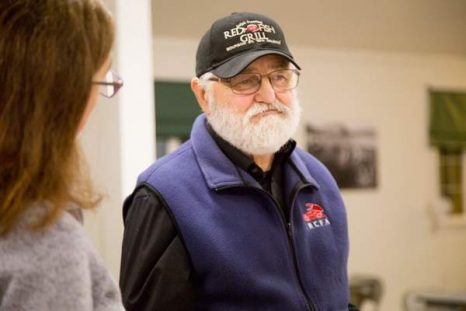
Washington State Marine Spatial Planning: Are ‘winds of change’ in store for local waters?
Could Pacific Ocean wind farms and fish-rearing net pens in Willapa Bay become future industries in Pacific County? Those are some possibilities being studied among an array of new potential ocean uses mentioned by the Washington Department of Ecology during a public meeting Wednesday, Nov. 8, in Long Beach. Marine Spatial Planning for Washington’s offshore waters was discussed by members of an inter-agency team led by Washington Department of Ecology Senior Ocean Planner Jennifer Hennessey. About 24 community members — including county officials, commercial fishermen and local oyster farmers — attended to listen or provide formal testimony regarding their concerns about new potential ocean uses and possible impacts on existing industries. click here to read the story 21:08

Dungeness crab season under way on the North Coast
The commercial crabbing season will start on time off the Sonoma Coast this fall for the first time in three years, putting fresh Dungeness crab in local markets by week’s end and restoring long-held autumn and holiday traditions. Commercial crabbers around Bodega Harbor hustled Monday to load boats with gear and bait and leave port in time to start soaking crab pots off the coast by early Tuesday morning. Their clocks were set for 6:01 a.m., the first moment by law at which they are permitted to put gear in the water. They can start pulling full pots and landing crab at 12:01 a.m. Wednesday, the official start of the season. click here to read the story 09:04
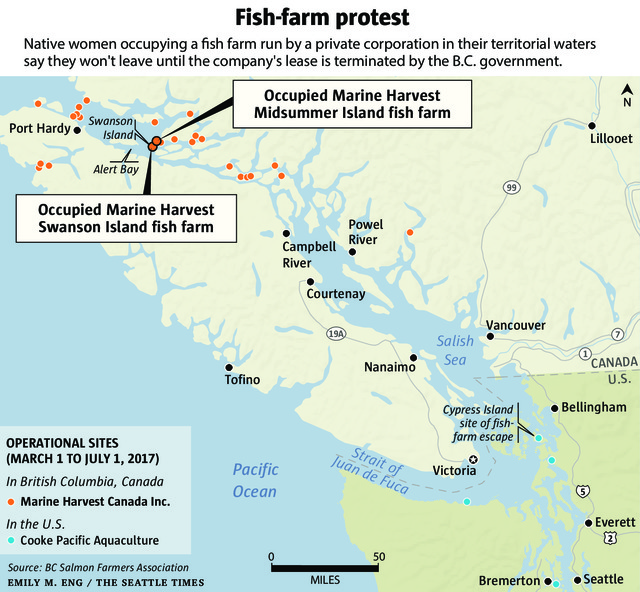
Salmon-farming operations face protests, occupations in B.C., legislative scrutiny in Washington state
A showdown is brewing over Atlantic salmon net-pen farming on both sides of the U.S.-Canada border. Marine Harvest, a major producer of farmed Atlantic salmon in British Columbia, is seeking a court order to evict First Nations women who have occupied one of its fish farms, an order it intends to enforce by police action if necessary, said Ian Roberts, spokesman for the company. Marine Harvest operates 11 open-water Atlantic salmon net-pen farms in the Broughton Archipelago alone, at the northeast end of Vancouver. Ten of the farms have leases that are up for renewal by the B.C. government in June, and two of those farms have been occupied by First Nations people who say they won’t leave until the leases are canceled. click here to read the story 12:04
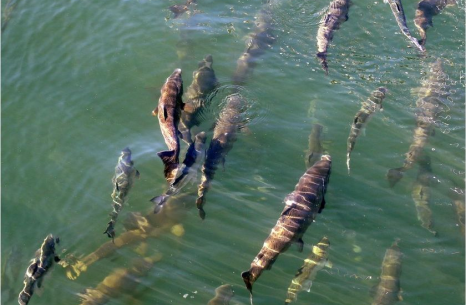
The “blob” is gone, but it’s left a troubling legacy on B.C.’s Pacific coast.
The blob is the popular name for a huge patch of warm water that featured record temperatures — in some cases, three to four degrees Celsius above normal — in the Northeast Pacific starting in 2013 and running through late 2015 and early 2016. Scientists are now concerned that young fish feeding at sea during the blob’s presence did not have enough nutritious food to eat — and that could translate into reduced adult fish to harvest going forward. click here to read the story 08:07
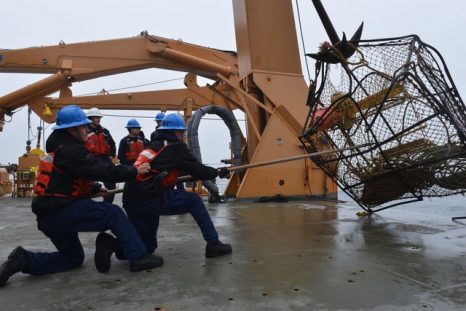
Seattle-based Alaska crab fleet alerted to new hazard: They’re carrying heavier pots
Alaska crab boats carry stability reports meant to guide the safe loading of up to several hundred crab pots that may be used to bring in a catch from the turbulent Bering Sea. But Coast Guard spot checks found that most of these documents significantly underestimate the weights of the steel-framed pots. The checks were spurred by a Coast Guard investigation into the Feb. 11 sinking of the Seattle-based Destination and the loss of all six of its crew. One of the vessel’s pots — retrieved from the Bering Sea bottom in July — was found to weigh more than the Destination’s stability report had assumed, according to testimony in a Marine Board of Investigation into the disaster. click here to read the story 10:46
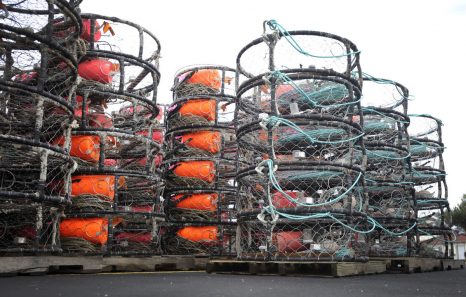
Oregon: Bay crabbing closures leave businesses empty
The Oct. 15 closure of both recreational and commercial crabbing came as quite a surprise to many local businesses who rely on bay crabbing in the months leading up to the Dec. 1 ocean crabbing season.,,, The Oregon Department of Fish and Wildlife along with the Oregon Department of Agriculture closed crabbing after noticing increased levels of domoic acid in local Dungeness crabs coming out of the bay. However, locals who financially rely on crabbing feel this isn’t as dangerous as state agencies are making it out to be. click here to read the story 09:08
Fish traps of past may help future of Columbia salmon
 The once-outlawed commercial fishing technique has been generating fresh interest in the face of declining wild salmon runs and might offer a less lethal way of handling wild salmon while harvesting hatchery fish for the consumer. Fish traps were once used broadly in the Northwest during the early part of the last century to harvest salmon for the canneries, but they were eventually outlawed because they caught too many fish.,, Jim Wells is a member of the lower Columbia River gill-net fleet, and after the conservation group published its findings on the traps he did a little bit of research. Using the catch data from the trap, he figured just how many sell-able fish they had caught during this last season. click here to read the story 14:52
The once-outlawed commercial fishing technique has been generating fresh interest in the face of declining wild salmon runs and might offer a less lethal way of handling wild salmon while harvesting hatchery fish for the consumer. Fish traps were once used broadly in the Northwest during the early part of the last century to harvest salmon for the canneries, but they were eventually outlawed because they caught too many fish.,, Jim Wells is a member of the lower Columbia River gill-net fleet, and after the conservation group published its findings on the traps he did a little bit of research. Using the catch data from the trap, he figured just how many sell-able fish they had caught during this last season. click here to read the story 14:52
Commercial Dungeness crab season scheduled to start on Nov. 15
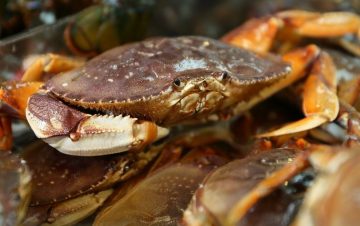 On Thursday, the California Department of Public Health said that the local commercial Dungeness crab season is expected to begin as scheduled on Wednesday for the San Francisco fishing fleet and the region south of the Mendocino County line. As in recent years, there was some concern about whether that would happen when preseason tests of Dungeness crabs caught in far Northern California — especially near Fort Bragg and Crescent City (Del Norte County) — showed dangerous levels of domoic acid, the naturally occurring toxin that delayed the 2015-16 and 2016-17 commercial crab seasons. click here to read the story 21:34
On Thursday, the California Department of Public Health said that the local commercial Dungeness crab season is expected to begin as scheduled on Wednesday for the San Francisco fishing fleet and the region south of the Mendocino County line. As in recent years, there was some concern about whether that would happen when preseason tests of Dungeness crabs caught in far Northern California — especially near Fort Bragg and Crescent City (Del Norte County) — showed dangerous levels of domoic acid, the naturally occurring toxin that delayed the 2015-16 and 2016-17 commercial crab seasons. click here to read the story 21:34

Fingers crossed there won’t be anything to be crabby about this season
With their pots stacked high and boat decks washed, commercial crab fishermen along the Central Coast are prepped for a season that is expected to start next Wednesday, on-time for the first time since 2014. And the getting could be good. “Ocean conditions over the past couple years, as the crabs that we’ll catch this year have matured, have been pretty good,” says Noah Oppenheim, executive director of the Pacific Coast Federation of Fishermen’s Associations in San Francisco. “It was good enough that we think the resources will be very healthy.” “Brutal,” “devastating,” “a disaster,” are all ways fishermen and heads of the industry have described the crab seasons of 2015 and 2016,,, click here to read the story 09:25
Washington Crabbers Join Peers In Tackling Whale Entanglement Risk
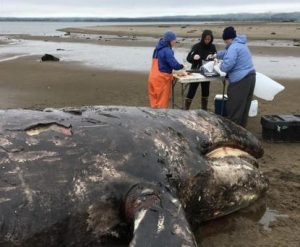 Earlier this year, a gray whale calf died after getting tangled in crab pot lines near Seaview, Washington. Now commercial and tribal crab fishermen from the Washington coast have agreed to form a working group to discuss how to reduce the risk of a repeat. Fleets in Oregon and California have previously formed similar work groups. Whale numbers along the West Coast are rebounding, but so are sightings of humpback whales, gray whales and the odd blue whale entangled in fishing lines and buoys. click here to read the story 08:55
Earlier this year, a gray whale calf died after getting tangled in crab pot lines near Seaview, Washington. Now commercial and tribal crab fishermen from the Washington coast have agreed to form a working group to discuss how to reduce the risk of a repeat. Fleets in Oregon and California have previously formed similar work groups. Whale numbers along the West Coast are rebounding, but so are sightings of humpback whales, gray whales and the odd blue whale entangled in fishing lines and buoys. click here to read the story 08:55
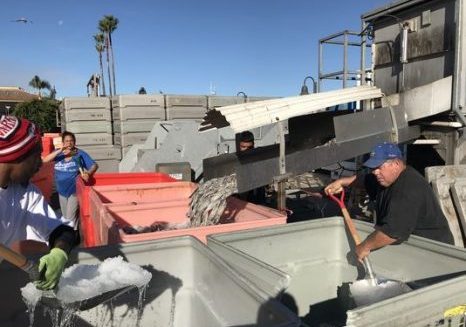
Working Waterfront: Several hundred tons of squid offloaded in Ventura
The smell of squid filled the air Tuesday morning at Ventura Harbor, where workers were bustling to offload hundreds of tons of it. The morning’s activities represented one of the largest squid hauls the harbor has seen in recent history. Approximately 300 to 400 tons of squid were brought into the harbor, representing a positive turn of events, said Frank Locklear, manager of commercial fisheries and technology at the Ventura Harbor Village Marina. click here to read the story 21:23

Fisherman dies getting pulled overboard off the coast of Eureka on Wednesday afternoon.
Redcrest resident and fisherman Melvin Richard Van Ronk died Wednesday afternoon after becoming entangled in fishing gear and being pulled overboard while fishing off the coast of Eureka, according to the Coast Guard Sector Humboldt Bay and the Humboldt County Sheriff’s Office on Thursday. Van Ronk, 77, was fishing on the vessel “Ruth R” out of Eureka about 15 miles off the coast when he became entangled in the fishing gear, according to Coast Guard Sector Humboldt Bay Public Information Officer Audra Forteza. click here to read the story 22:23
D.B. Pleschner: Nearshore anchovy abundance not proof fishery is collapsing
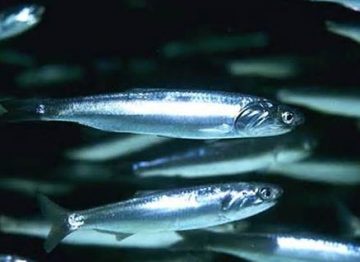 Recently, Dr. William Sydeman of the Farallon Institute, published a study claiming that the abundance of anchovy near shore — especially in places like Monterey — is evidence that the population is collapsing. Sydeman’s logic is based on an old argument that collapsed populations always shrink inshore. But there’s one big problem with that theory — it’s unsupported by scientific evidence.,,, The bottom line: environmental groups with an anti-fishing agenda are already gearing up to hot-box the Pacific Fishery Management Council in spring 2018, lobbying for a steep reduction in anchovy harvest limits, employing whatever colorful, sensational pictures they can paint. click here to read the story 20:58
Recently, Dr. William Sydeman of the Farallon Institute, published a study claiming that the abundance of anchovy near shore — especially in places like Monterey — is evidence that the population is collapsing. Sydeman’s logic is based on an old argument that collapsed populations always shrink inshore. But there’s one big problem with that theory — it’s unsupported by scientific evidence.,,, The bottom line: environmental groups with an anti-fishing agenda are already gearing up to hot-box the Pacific Fishery Management Council in spring 2018, lobbying for a steep reduction in anchovy harvest limits, employing whatever colorful, sensational pictures they can paint. click here to read the story 20:58
Washington Department of Fish and Wildlife – Crab still soft, light on meat
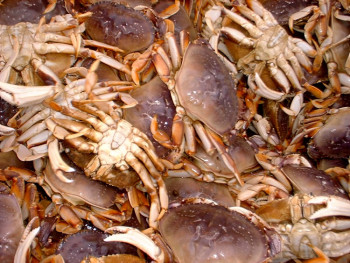 Dungeness crab in the Long Beach area are putting on meat at a slower rate than last year, possibly calling into question whether they will be ready for harvest by the traditional Dec. 1 start date. Samples gathered by Oct. 24 in the Long Beach test area had a meat-recovery rate of 19.9 percent, compared to 23 percent from samples gathered by Oct. 30 last year. Samples from the Westport area collected on or before Oct. 27 had a recovery rate of 20.2 percent, compared to 22.9 percent last year. A test conducted by the Quinault Indian Nation (off Westport and Point Grenville) on Oct. 17 had a pick-out rate of 16.5 percent, according to an Oct. 31 report by the Washington Department of Fish and Wildlife. click here to read the story 19:37
Dungeness crab in the Long Beach area are putting on meat at a slower rate than last year, possibly calling into question whether they will be ready for harvest by the traditional Dec. 1 start date. Samples gathered by Oct. 24 in the Long Beach test area had a meat-recovery rate of 19.9 percent, compared to 23 percent from samples gathered by Oct. 30 last year. Samples from the Westport area collected on or before Oct. 27 had a recovery rate of 20.2 percent, compared to 22.9 percent last year. A test conducted by the Quinault Indian Nation (off Westport and Point Grenville) on Oct. 17 had a pick-out rate of 16.5 percent, according to an Oct. 31 report by the Washington Department of Fish and Wildlife. click here to read the story 19:37
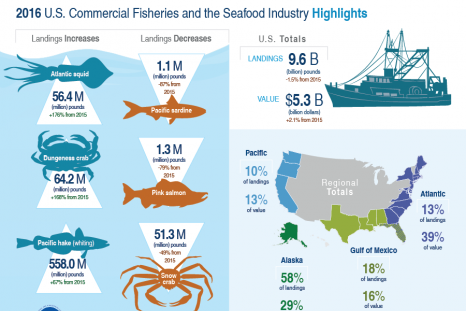
NOAA: American Fisheries Remain a Strong Economic Driver
Commercial and recreational fisheries remain a strong contributor to the United States economy, according to the annual Fisheries of the United States report released today by NOAA.
Saltwater recreational fishing remains one of America’s favorite pastimes and a key contributor to the national economy,,, Also in 2016, U.S. commercial fishermen landed 9.6 billion pounds of seafood (down 1.5 percent from 2015) valued at $5.3 billion (up 2.1 percent from 2015). The highest value commercial species were lobster ($723 million),,, click here to read the report click here for infographics 15:27

For the first time in almost two decades, a fisherman sold fish straight from his boat at Fisherman’s Wharf.
Giuseppe “Joe” Pennisi sold about 230 pounds of rockfish, petrale sole and other fish from his boat on Saturday and Sunday, making him the first to take part in a pilot program at the Port of San Francisco that allows fishermen to sell directly to retail customers from their boats. David and Evelyn Riley of Fremont were the first customers to stroll up Saturday to Pennisi’s boat, the Pioneer, which was docked on Pier 47 near Scoma’s Restaurant. click here to read the story 11:11
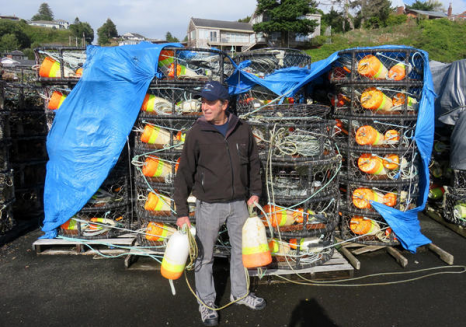
Fishermen: ‘We want to be proactive’ – Making The Sea Safer For Whales
More than 30 times this year, the federal government has received reports of whales tangled in fishing gear along the West Coast. Sometimes the whales manage to wriggle free. Other times you see heart-rending pictures on the news or a rescue mission. The culprit often involves Dungeness crab pot lines. Now Oregon crabbers are working with marine scientists to make the seas safer for whales and to avoid a black mark on their brand. Bob Eder has fished commercially out of Newport, Oregon for decades. “Over 45 years of pulling crab pots—I think I’ve probably hauled in close to a million—I’ve never encountered an entangled whale,” he said. ‘We want to be proactive’ click here to read the story 09:03
SEEKING HELP: West Coast Senators ask for disaster aid for fisheries in the next 2017 disaster funding package.
 In a bipartisan push led by Oregon’s Senator Jeff Merkley, all eight West Coast Senators—Merkley, Sen. Patty Murray (D-WA), Sen. Lisa Murkowski (R-AK), Sen. Dan Sullivan (R-AK), Sen. Dianne Feinstein (D-CA), Sen. Maria Cantwell (D-WA), Sen. Ron Wyden (D-OR) and Sen. Kamala Harris (D-CA) — today called on congressional leaders and the Trump administration to include disaster aid for fisheries in the next 2017 disaster funding package. click here to read the story 15:00
In a bipartisan push led by Oregon’s Senator Jeff Merkley, all eight West Coast Senators—Merkley, Sen. Patty Murray (D-WA), Sen. Lisa Murkowski (R-AK), Sen. Dan Sullivan (R-AK), Sen. Dianne Feinstein (D-CA), Sen. Maria Cantwell (D-WA), Sen. Ron Wyden (D-OR) and Sen. Kamala Harris (D-CA) — today called on congressional leaders and the Trump administration to include disaster aid for fisheries in the next 2017 disaster funding package. click here to read the story 15:00
Dungeness crab season could be delayed again by the toxin domoic acid
 Dungeness crab season is approaching in the Bay Area, along with all the rituals that come with it — the crab feeds and holiday dinners piled with crab legs, sourdough bread and crocks of melted butter. Unfortunately, there’s another, more recent local tradition that is also back: uncertainty about whether algal blooms will delay the season. Domoic acid is the naturally occurring toxin caused by algal blooms that delayed the past two Dungeness crab seasons. According to test results from the California Department of Public Health, elevated levels of the toxin have shown up in samples of Dungeness crab collected in recent weeks at several North Coast ports. However, the agency said it’s too soon to say whether domoic acid will delay the commercial Dungeness fishery, due to open Nov. 15. click here to read the story 11:05
Dungeness crab season is approaching in the Bay Area, along with all the rituals that come with it — the crab feeds and holiday dinners piled with crab legs, sourdough bread and crocks of melted butter. Unfortunately, there’s another, more recent local tradition that is also back: uncertainty about whether algal blooms will delay the season. Domoic acid is the naturally occurring toxin caused by algal blooms that delayed the past two Dungeness crab seasons. According to test results from the California Department of Public Health, elevated levels of the toxin have shown up in samples of Dungeness crab collected in recent weeks at several North Coast ports. However, the agency said it’s too soon to say whether domoic acid will delay the commercial Dungeness fishery, due to open Nov. 15. click here to read the story 11:05
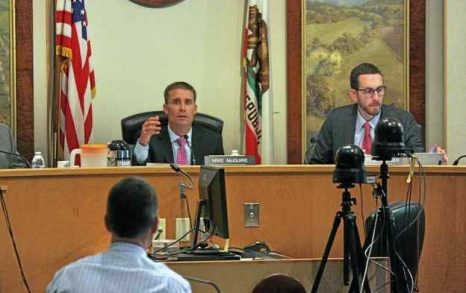
‘Time is of the essence’: California Fisheries face uncertainty
State regulators and fishing officials said at a Eureka hearing on Friday that only by working together can they overcome the trials and uncertainty that several California’s fisheries face today. With a poor salmon catch in 2017 and 2016 and a potential delay in the North Coast Dungeness crab season following three years of poor landings and abnormal ocean conditions, Pacific Coast Federation of Fishermen’s Associations Executive Director Noah Oppenheim said fishing fleets are still feeling the economic effects and that time to address the underlying issues is running slim. click here to read the story 08:46
State warns of sick, stranded sea lions on Oregon coast
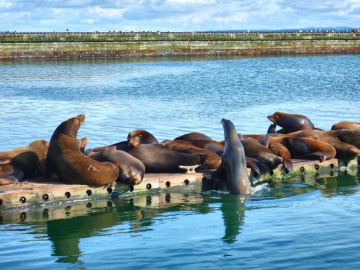 Oregon wildlife and health officials are warning beachgoers to be aware of sick and stranded California sea lions at the coast and to keep their distance. Officials at Oregon State University’s Marine Mammal Institute said they’ve documented a leptospirosis outbreak. The bacteria can prompt sick or dying sea lions to strand themselves on beaches and can also pose a threat to dogs, livestock and wildlife, as well as people. click here to read the story 13:55
Oregon wildlife and health officials are warning beachgoers to be aware of sick and stranded California sea lions at the coast and to keep their distance. Officials at Oregon State University’s Marine Mammal Institute said they’ve documented a leptospirosis outbreak. The bacteria can prompt sick or dying sea lions to strand themselves on beaches and can also pose a threat to dogs, livestock and wildlife, as well as people. click here to read the story 13:55
International Pacific Halibut Commission to revisit minimum size limit
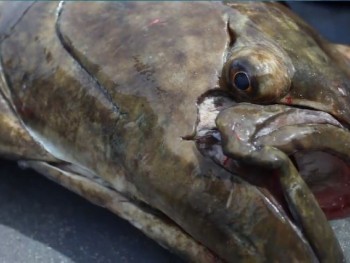 The International Pacific Halibut Commission, which regulates halibut fisheries in U.S. and Canadian waters, is set to take a fresh look at the minimum size limit during its meeting cycle this winter. The current limit allows commercial fishermen to retain fish larger than 32 inches, but the size of mature halibut has been shrinking over the years, which has some wondering whether the limit should be reduced or removed altogether. click here to read the story 09:16
The International Pacific Halibut Commission, which regulates halibut fisheries in U.S. and Canadian waters, is set to take a fresh look at the minimum size limit during its meeting cycle this winter. The current limit allows commercial fishermen to retain fish larger than 32 inches, but the size of mature halibut has been shrinking over the years, which has some wondering whether the limit should be reduced or removed altogether. click here to read the story 09:16

Warrenton Marina puts derelict boats on notice
It happened at night — these things usually do. The boat showed up in the Warrenton Marina, its fishing permits already sold. Someone else bought it from the previous owners for next to nothing. They took what they wanted off it and left it sitting in a boat slip. It’s still there. Last month, marina staff issued seizure notices to the owners of seven derelict or abandoned boats in the Warrenton Marina, most of them older, wooden commercial vessels and ranging in size from a 26-foot recreational boat to the 62-foot wooden fishing vessel Master Chris. Often such boats end up abandoned in the marina because the owners get sick, or there’s a death and the question of who has ownership is muddied. Photo’s, click here to read the story 14:40
Report on U.S. Marine Sanctuary Oil Drilling Sent to White House, Not Released to Public
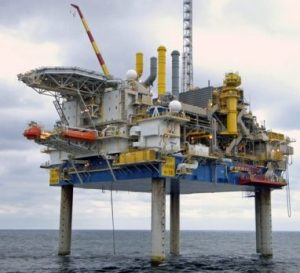 U.S. Commerce Department Secretary Wilbur Ross sent a report to the White House on Wednesday containing recommendations on whether to change the boundaries of 11 marine sanctuaries to allow more oil and gas drilling, but the report was not made public. Commerce reviewed sanctuaries containing 425 million acres of coral reefs, marine mammal habitats and pristine beaches, as part of an administration strategy to open new areas to oil and gas drilling. click here to read the story 07:18
U.S. Commerce Department Secretary Wilbur Ross sent a report to the White House on Wednesday containing recommendations on whether to change the boundaries of 11 marine sanctuaries to allow more oil and gas drilling, but the report was not made public. Commerce reviewed sanctuaries containing 425 million acres of coral reefs, marine mammal habitats and pristine beaches, as part of an administration strategy to open new areas to oil and gas drilling. click here to read the story 07:18

The Great Pacific Migration of Bluefin Tuna
Shortly after their first birthday, Pacific bluefin tuna (Thunnus orientalis) complete an impressive feat. From the spawning grounds in the Sea of Japan where they were born, the young tuna embark on a journey over 5,000 miles (8,000 km) long, across the entire Pacific Ocean to the California coast where they spend several years feeding and growing. Until recently, scientists believed only a small portion of juvenile tuna made the journey, but several new studies show that may not be the case—in some years the majority of tuna aged between one and three participate in the trans-Pacific migration. click here to read the story 14:53
Commercial Spiny Lobster Fishery Closed at Anacapa Island and the East End of Santa Cruz Island Due to Public Health Hazard
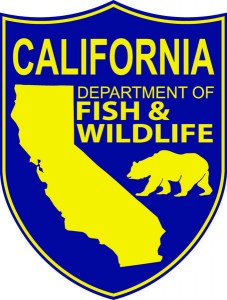 California Department of Fish and Wildlife (CDFW) Director Charlton H. Bonham has enacted a commercial spiny lobster fishery closure effective immediately. State health agencies determined that spiny lobster near Anacapa Island, Ventura County and the east end of Santa Cruz Island, Santa Barbara County had unhealthy levels of domoic acid and recommended closure of the commercial fishery. The recreational fishery for spiny lobster remains open statewide with a warning from the California Department of Public Health (CDPH) to recreational anglers to avoid consuming the viscera (tomalley) of spiny lobster. click here to read the story 21:30
California Department of Fish and Wildlife (CDFW) Director Charlton H. Bonham has enacted a commercial spiny lobster fishery closure effective immediately. State health agencies determined that spiny lobster near Anacapa Island, Ventura County and the east end of Santa Cruz Island, Santa Barbara County had unhealthy levels of domoic acid and recommended closure of the commercial fishery. The recreational fishery for spiny lobster remains open statewide with a warning from the California Department of Public Health (CDPH) to recreational anglers to avoid consuming the viscera (tomalley) of spiny lobster. click here to read the story 21:30
California State legislators to meet in Eureka to discuss future of crab, salmon fisheries
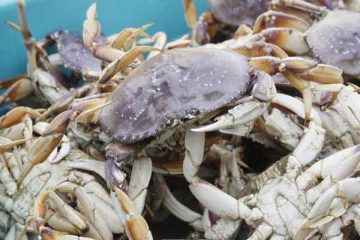 With the California crab season opener approaching and a poor salmon season winding down, a California legislative committee is set to meet in Eureka on Friday to discuss what the future holds for two of the North Coast’s most important fisheries. The Joint Committee on Fisheries and Aquaculture hearing is set to touch upon everything from whale entanglements in crab gear and the recent lawsuit filed related to them; the potential for a federal disaster declaration for California’s and Oregon’s 2017 salmon season; and crab fishing rules and recent test results on how toxic algae blooms are affecting crab this year. click here to read the story 09:02
With the California crab season opener approaching and a poor salmon season winding down, a California legislative committee is set to meet in Eureka on Friday to discuss what the future holds for two of the North Coast’s most important fisheries. The Joint Committee on Fisheries and Aquaculture hearing is set to touch upon everything from whale entanglements in crab gear and the recent lawsuit filed related to them; the potential for a federal disaster declaration for California’s and Oregon’s 2017 salmon season; and crab fishing rules and recent test results on how toxic algae blooms are affecting crab this year. click here to read the story 09:02






